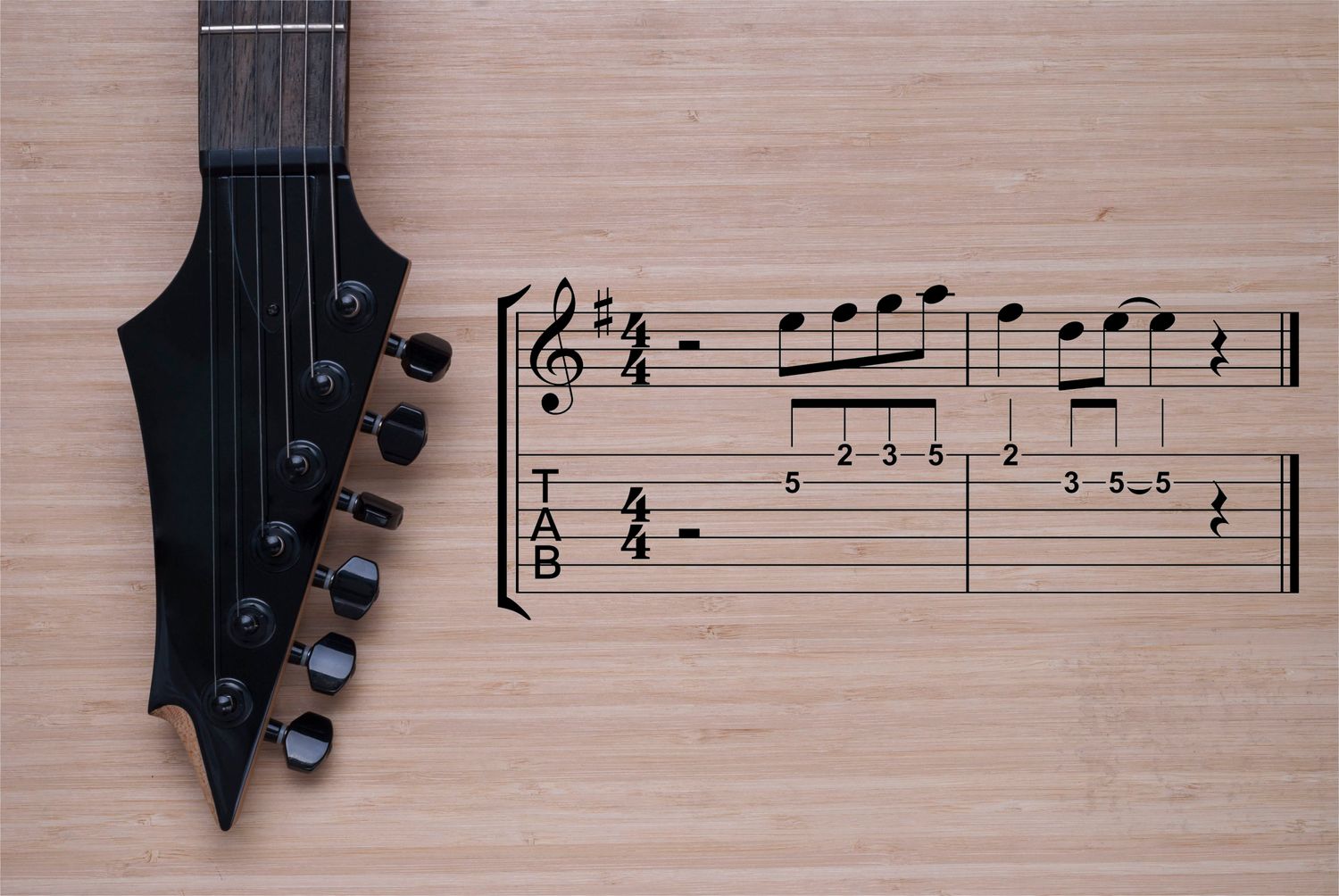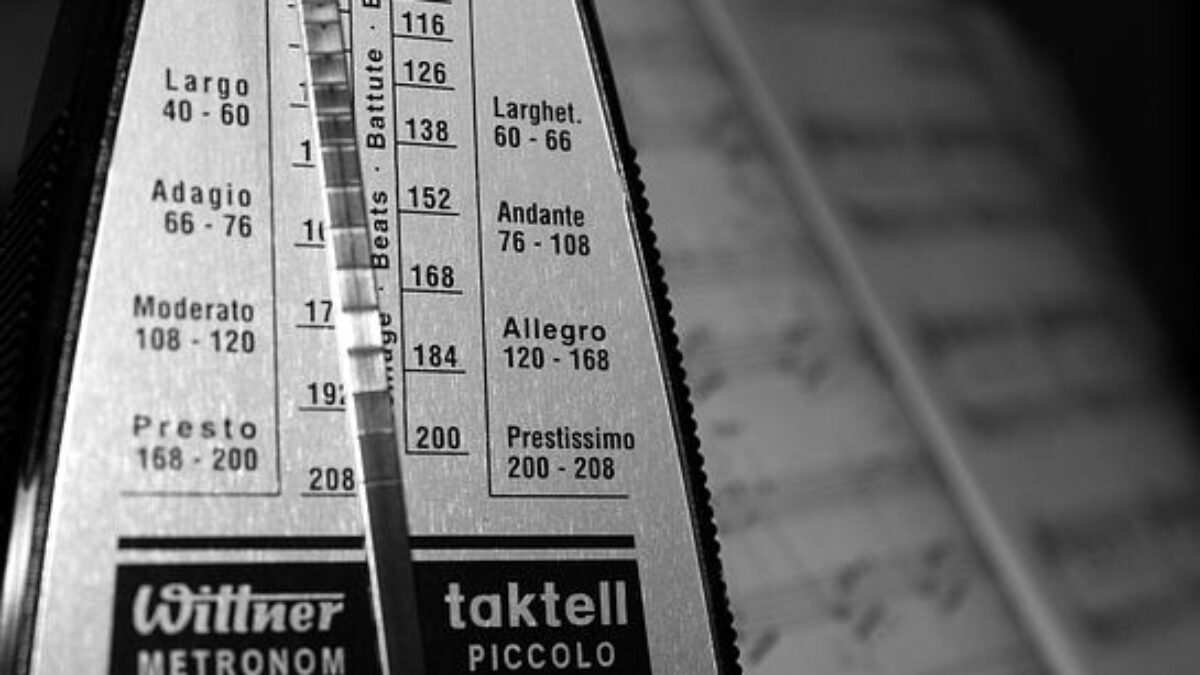Home>Instruments>Guitar>How To Read Guitar Strumming Patterns


Guitar
How To Read Guitar Strumming Patterns
Published: February 14, 2024
Learn how to read guitar strumming patterns with our comprehensive guide. Master the rhythm and technique for playing guitar. Perfect for beginners and experienced players alike. Discover essential tips and tricks today!
(Many of the links in this article redirect to a specific reviewed product. Your purchase of these products through affiliate links helps to generate commission for AudioLover.com, at no extra cost. Learn more)
Table of Contents
Introduction
Learning to read guitar strumming patterns is a crucial skill for any aspiring guitarist. Strumming patterns are the rhythmic combinations of upstrokes and downstrokes used to play chords on the guitar. Understanding and mastering strumming patterns can significantly enhance your musicality, allowing you to add depth and dynamics to your playing. In this comprehensive guide, we will delve into the intricacies of guitar strumming patterns, from the basics to more advanced techniques. Whether you're a beginner seeking to grasp the fundamentals or an intermediate player aiming to expand your repertoire, this article will provide valuable insights and practical tips to help you navigate the world of guitar strumming patterns with confidence.
As we embark on this journey, we'll explore the significance of understanding strumming patterns, dissect basic and advanced patterns, and equip you with essential tips for deciphering and interpreting these patterns effectively. By the end of this guide, you'll be well-equipped to tackle a wide array of strumming patterns, empowering you to elevate your guitar playing to new heights. So, grab your guitar, tune the strings, and let's unravel the art of reading guitar strumming patterns together.
Understanding Guitar Strumming Patterns
Before delving into specific strumming patterns, it’s essential to understand the foundational elements that constitute these rhythmic techniques. Strumming patterns dictate the direction and timing of your strumming hand as it moves across the strings of the guitar. They play a pivotal role in shaping the overall feel and groove of a song, allowing you to infuse your playing with emotion and character.
At the core of every strumming pattern lies the concept of rhythm. Rhythm is the heartbeat of music, providing structure and coherence to a piece. When applied to the guitar, rhythm encompasses the division of time into distinct beats and the arrangement of accents within those beats. Strumming patterns are essentially rhythmic blueprints that guide your strumming hand, dictating when to strike the strings and whether to use upstrokes or downstrokes.
Furthermore, understanding time signatures is integral to comprehending strumming patterns. Time signatures denote the number of beats in each bar of music and the type of note that receives one beat. Common time signatures in popular music include 4/4, 3/4, and 6/8, each of which imparts a unique feel to the music. By grasping the nuances of time signatures, you’ll gain insight into the rhythmic framework underlying strumming patterns, enabling you to navigate them with precision.
Additionally, dynamics and accents play a crucial role in shaping strumming patterns. Dynamics refer to the variation in volume and intensity throughout a piece, while accents emphasize specific beats within a measure. By incorporating dynamics and accents into your strumming patterns, you can imbue your playing with depth and expressiveness, elevating the overall musical experience.
Ultimately, understanding guitar strumming patterns entails a holistic grasp of rhythm, time signatures, dynamics, and accents. These components converge to form the rhythmic tapestry that defines a song, and mastering them will empower you to interpret and execute strumming patterns with finesse and creativity.
Basic Strumming Patterns
Basic strumming patterns serve as the building blocks for rhythmic guitar playing, laying the foundation upon which more intricate patterns are constructed. These patterns are characterized by their simplicity and are often employed in countless songs across various genres. By mastering basic strumming patterns, you’ll develop a solid rhythmic proficiency that forms the bedrock of your musical journey.
One of the most ubiquitous basic strumming patterns is the downstroke strum. This straightforward technique involves striking the strings in a downward motion using your pick or fingers. The downstroke strum is typically executed on each beat of a measure, creating a steady and consistent rhythm. It’s an ideal starting point for beginners, providing a gateway to understanding the fundamental mechanics of strumming and developing a sense of timing.
Expanding upon the downstroke strum, the down-up strum introduces an additional layer of complexity by incorporating upstrokes. In this pattern, you alternate between downstrokes and upstrokes, effectively doubling the rhythmic possibilities at your disposal. The down-up strum adds a dynamic dimension to your playing, allowing for greater versatility and rhythmic expression.
Another essential basic strumming pattern is the “three down, one up” pattern, which involves executing three consecutive downstrokes followed by a single upstroke. This pattern is particularly effective in creating a driving, syncopated feel, lending a sense of momentum to the music. It’s commonly utilized in folk, rock, and pop genres, contributing to the infectious energy of countless iconic songs.
Furthermore, the “swing” strumming pattern infuses a sense of swing or shuffle into your playing, evoking a distinct sense of groove. By altering the duration and emphasis of the downstrokes and upstrokes, the swing pattern introduces a syncopated feel that is prevalent in jazz, blues, and swing music. Mastering this pattern opens the door to a rich tapestry of rhythmic possibilities, allowing you to explore diverse musical styles with confidence.
By familiarizing yourself with these basic strumming patterns, you’ll lay a robust groundwork for your rhythmic development as a guitarist. These patterns serve as essential tools for crafting engaging and compelling musical arrangements, providing a springboard for your creative expression and rhythmic exploration.
Advanced Strumming Patterns
As your proficiency in strumming develops, delving into advanced strumming patterns opens up a world of rhythmic intricacies and expressive possibilities. These patterns, characterized by their complexity and nuanced execution, add depth and sophistication to your guitar playing, allowing you to infuse your music with captivating rhythmic textures.
The syncopated strumming pattern exemplifies an advanced rhythmic technique that introduces offbeat accents and unexpected rhythmic placements. By emphasizing the “ands” between the beats, the syncopated pattern creates a compelling sense of rhythmic tension and release, injecting vitality and momentum into your playing. This pattern is prevalent in funk, R&B, and Latin music, contributing to the infectious grooves that define these genres.
Furthermore, the percussive strumming pattern incorporates percussive elements into your strumming, transforming the guitar into a rhythmic powerhouse. By employing muted strums and percussive slaps on the strings, you can emulate the percussive qualities of a drum kit, adding a dynamic rhythmic dimension to your playing. This technique is widely utilized in acoustic and flamenco guitar styles, enriching the sonic palette with percussive flair.
Complex fingerstyle strumming patterns, such as Travis picking and flamenco rasgueado, showcase the intricate interplay of finger movements and rhythmic intricacies. These patterns involve intricate fingerpicking techniques combined with rhythmic strumming, resulting in mesmerizing layers of melody, harmony, and rhythm. Mastering these advanced fingerstyle patterns elevates your guitar playing to a virtuosic level, enabling you to craft elaborate and evocative musical landscapes.
Moreover, odd meter strumming patterns venture beyond the conventional time signatures, exploring rhythmic landscapes characterized by irregular meters such as 5/4, 7/8, and 9/8. Embracing odd meter strumming patterns challenges traditional rhythmic conventions, fostering a sense of unpredictability and intrigue within your playing. This adventurous approach to rhythm opens doors to progressive and experimental musical expressions, pushing the boundaries of traditional strumming patterns.
By immersing yourself in advanced strumming patterns, you’ll embark on a rhythmic odyssey that transcends the ordinary, unlocking a realm of expressive possibilities and rhythmic innovation. These patterns serve as a testament to the boundless creativity and versatility of the guitar as a rhythmic instrument, empowering you to craft compelling and dynamic musical experiences.
Tips for Reading Guitar Strumming Patterns
Mastering the art of reading guitar strumming patterns requires a combination of attentive observation, rhythmic intuition, and diligent practice. To enhance your proficiency in deciphering and interpreting strumming patterns, consider the following tips that will elevate your rhythmic comprehension and fluency:
- Visualize the Strumming Motion: When confronted with a strumming pattern, visualize the directional movement of your strumming hand. Mentally map out the sequence of downstrokes and upstrokes, envisioning the rhythmic flow before translating it to your guitar. This visual rehearsal primes your muscle memory and enhances your ability to execute the pattern with precision.
- Internalize the Rhythmic Feel: Immerse yourself in the rhythmic feel of the pattern by tapping your foot or clapping your hands to the beat. Internalizing the pulse of the pattern fosters a deep-seated understanding of its rhythmic nuances, allowing you to embody the groove and feel of the music as you play.
- Break It Down: Deconstruct complex strumming patterns into smaller, manageable segments. Focus on mastering each segment individually before integrating them into the complete pattern. This incremental approach cultivates a sense of mastery and minimizes the overwhelm often associated with intricate patterns.
- Utilize Metronome Practice: Employ a metronome to develop a steady sense of timing and precision. Set the metronome to the tempo of the song and practice the strumming pattern in conjunction with the metronome’s rhythmic clicks. This methodical practice hones your ability to stay in sync with the beat, fostering rhythmic accuracy and consistency.
- Experiment with Variations: Once you’ve grasped a strumming pattern, experiment with variations to infuse your playing with creativity. Explore different dynamics, accents, and embellishments to personalize the pattern and imbue it with your musical identity. Embracing experimentation fosters artistic growth and adds a unique flair to your interpretations.
- Contextualize with Songs: Apply the strumming patterns within the context of songs you enjoy playing. By integrating patterns into actual musical pieces, you’ll witness their application in a tangible setting, reinforcing your understanding and enabling you to seamlessly incorporate them into your repertoire.
By integrating these tips into your practice regimen, you’ll fortify your ability to read, internalize, and execute guitar strumming patterns with confidence and finesse. Embrace the rhythmic journey with an open mind and a spirit of curiosity, and watch as your rhythmic prowess blossoms, enriching your musical endeavors.
Conclusion
Congratulations on embarking on the enriching journey of understanding and interpreting guitar strumming patterns. Throughout this guide, we’ve navigated the rhythmic intricacies that define these patterns, from the fundamental building blocks to the advanced techniques that elevate your playing to new heights. By delving into the world of strumming patterns, you’ve unlocked a gateway to rhythmic expression and musical creativity, equipping yourself with the tools to infuse your guitar playing with depth, emotion, and vitality.
Understanding guitar strumming patterns transcends mere technical proficiency; it embodies the art of rhythmic storytelling. Each strumming pattern carries its own unique narrative, shaping the ebb and flow of a song, and serving as a canvas for your musical expression. As you acquaint yourself with basic patterns and venture into the realm of advanced techniques, remember that rhythmic mastery is a journey of continual growth and discovery.
As you navigate the rhythmic landscapes of strumming patterns, embrace the joy of experimentation and the thrill of rhythmic exploration. Allow the patterns to become an extension of your musical voice, weaving intricate tapestries of rhythm that resonate with emotion and authenticity. Whether you’re strumming along to a beloved song or crafting original compositions, the rhythmic fluency you’ve cultivated will serve as a powerful catalyst for musical innovation and self-expression.
So, pick up your guitar, immerse yourself in the rhythmic tapestry of strumming patterns, and let your playing reverberate with the infectious energy and soul-stirring cadence of rhythmic mastery. Embrace the nuances, savor the challenges, and relish the moments of rhythmic revelation as you breathe life into each strumming pattern. With dedication, patience, and a spirit of rhythmic curiosity, you’ll continue to evolve as a guitarist, harnessing the rhythmic language of strumming patterns to articulate your musical narrative with eloquence and passion.
May your musical journey be adorned with rhythmic vitality and boundless creativity, as you harmonize with the rhythmic pulse of strumming patterns and unleash the full potential of your musical expression. Let the rhythmic cadence of your strumming patterns resonate with the world, weaving a melodic tapestry that captivates hearts and ignites the spirit of musical wonder.











